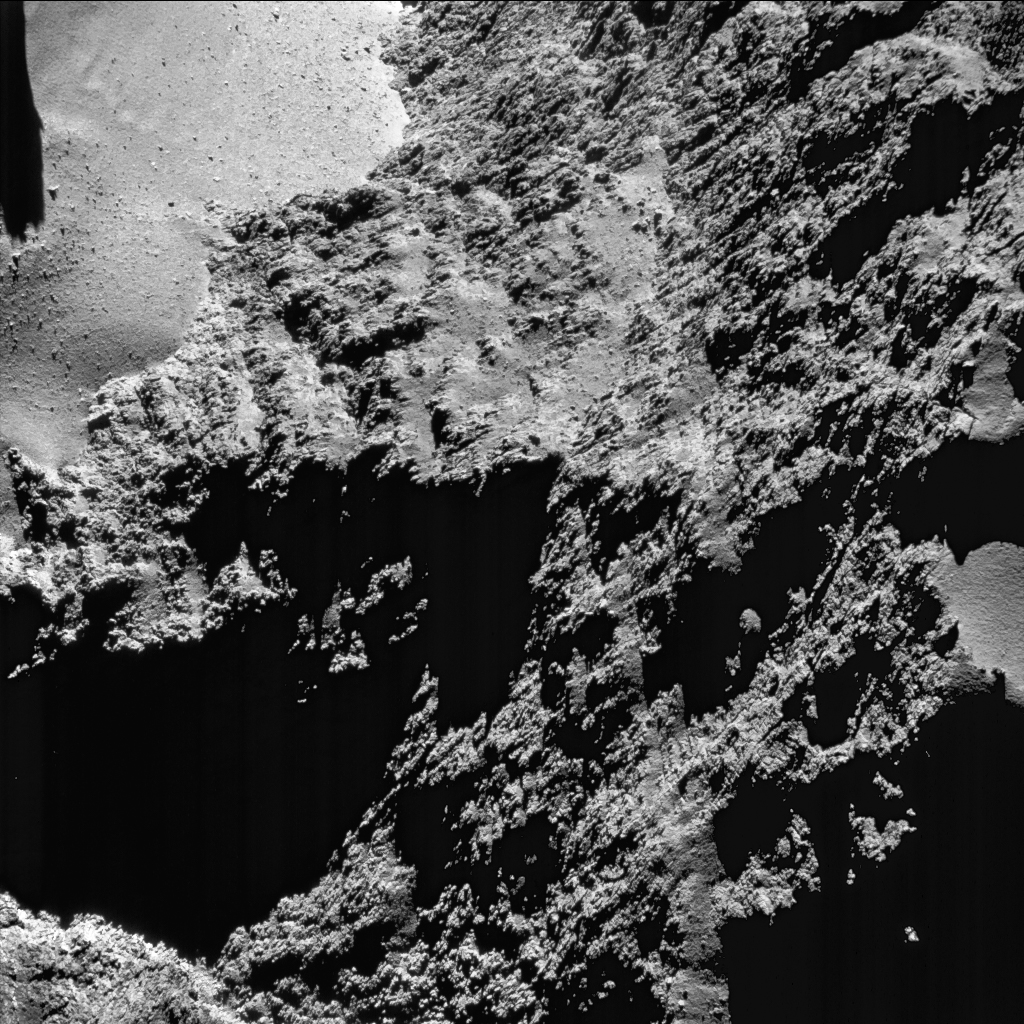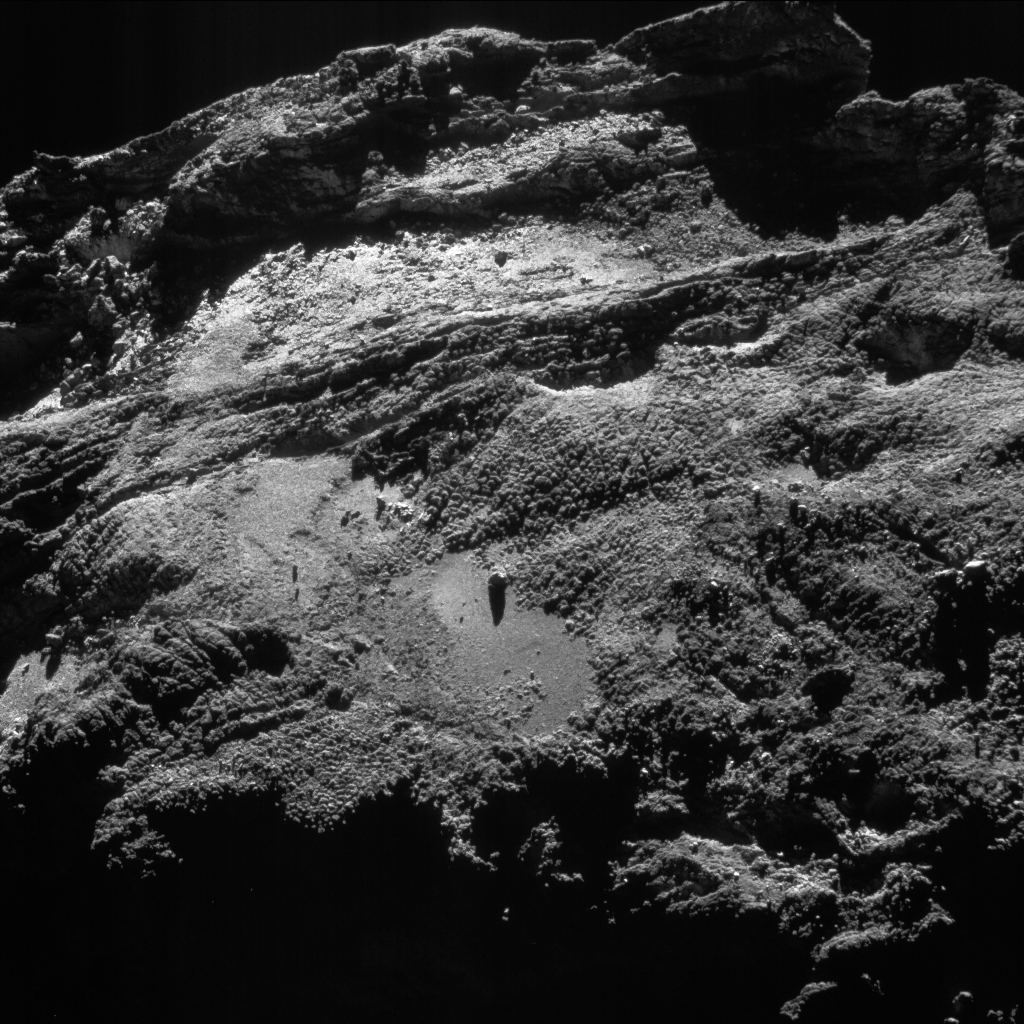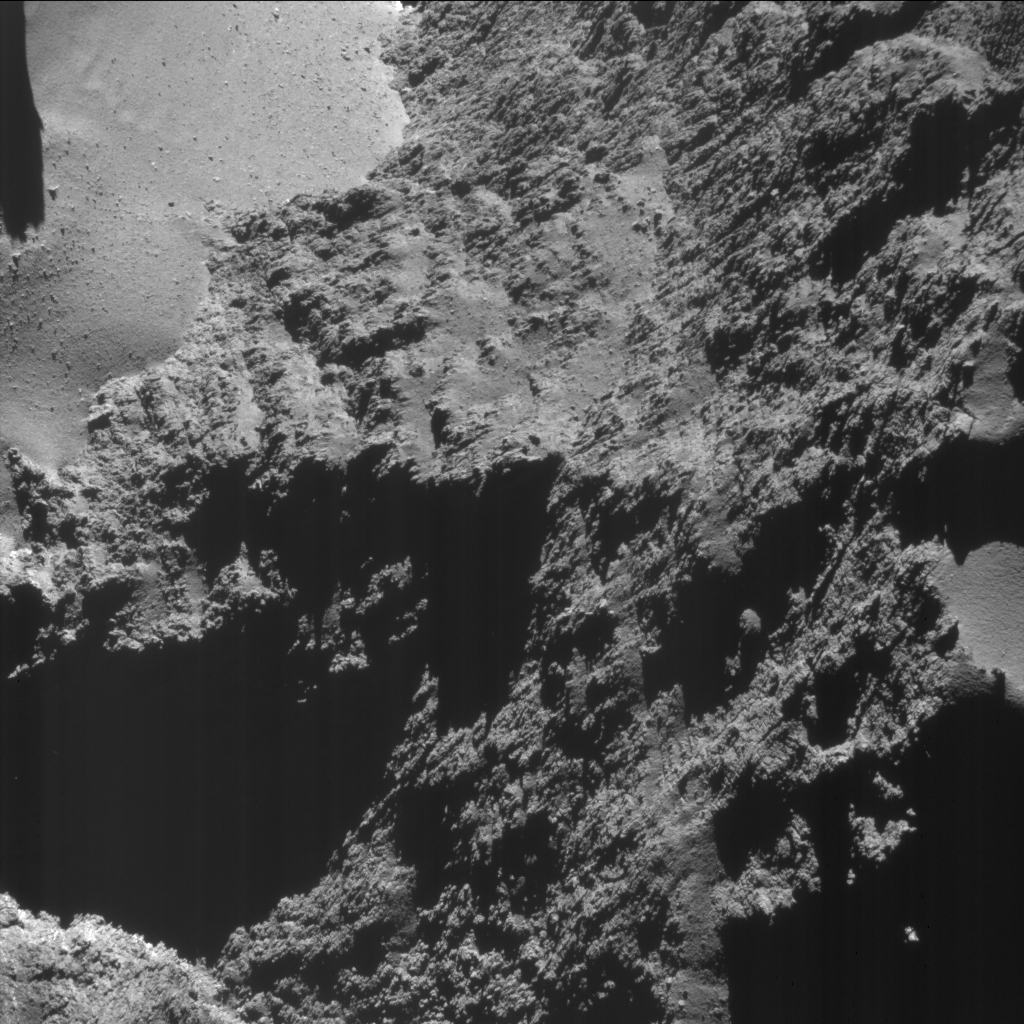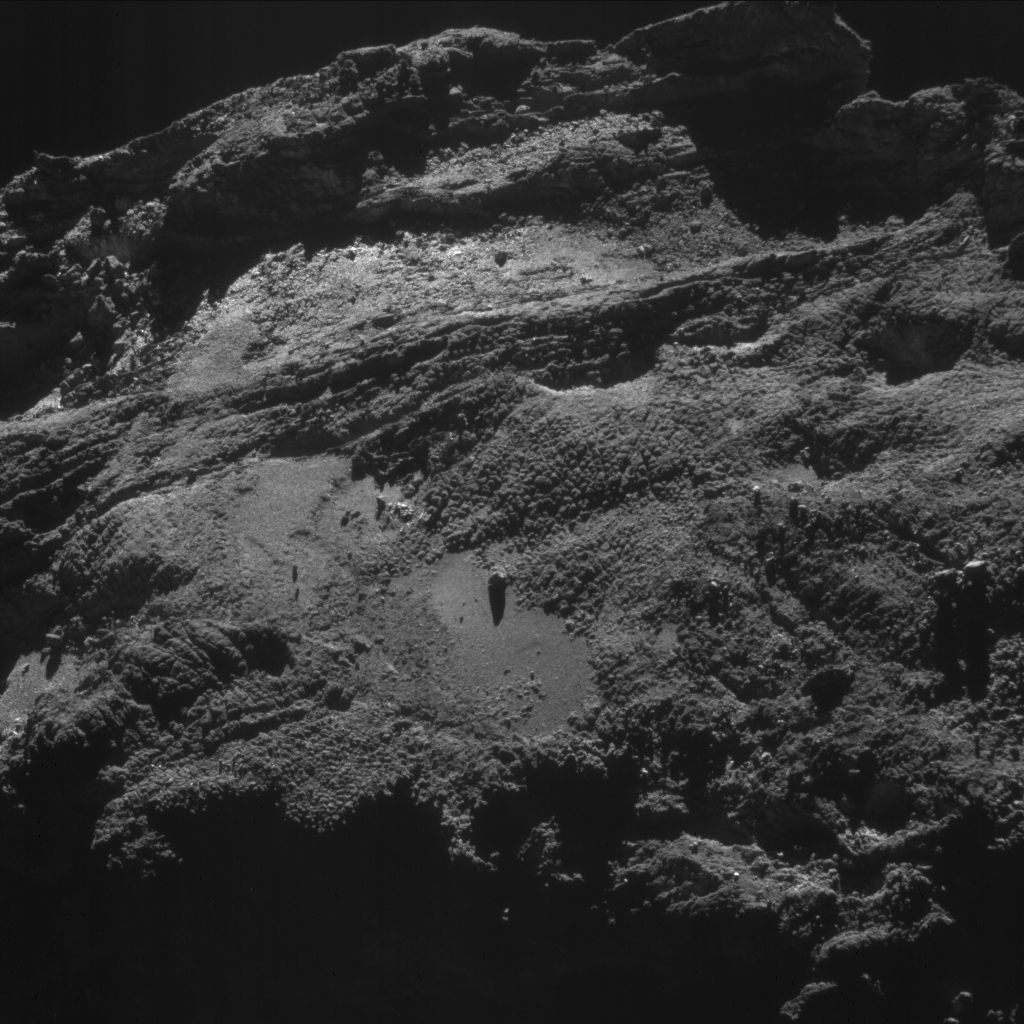This week’s CometWatch entry is a double feature, with two images of Comet 67P/Churyumov-Gerasimenko from Rosetta’s NAVCAM taken on 31 August and 11 September 2016, when the spacecraft was 8.8 and 9.8 km, respectively, from the centre of the comet nucleus.

Enhanced NAVCAM image of Comet 67P/C-G taken on 31 August 2016, 8.8 km from the nucleus. The scale is 0.7 m/pixel and the image measures 800 m across. Credits: ESA/Rosetta/NAVCAM – CC BY-SA IGO 3.0
The 31 August image provides a dramatic view on the steep slopes of the Hathor region, on the small comet lobe. Hathor consists of a 900-m high cliff sloping down towards the comet’s neck, and is characterised by marked linear features, streaks and even small terraces.
A hint of the dust-covered Ma’at region can be seen towards the right edge of the frame; Rosetta’s landing site, on Ma’at, is beyond the right frame of the image.
In the top left corner, a portion of the smooth terrains of Hapi is also visible: located on the comet’s neck, Hapi is covered in dusty material and punctuated with boulders.

Enhanced NAVCAM image of Comet 67P/C-G taken on 11 September 2016, 9.8 km from the nucleus. The scale is 0.8 m/pixel and the image measures 900 m across. Credits: ESA/Rosetta/NAVCAM – CC BY-SA IGO 3.0
The 11 September image, instead, portrays a piece of the Wosret region, on the opposite side of the small comet lobe with respect to Hathor. The location where the lander Philae was recently found is not far away, beyond the right edge of the image.
This view reveals the great variety of terrains on the overall flat Wosret region, with some patches of smooth material (just below and left of the image centre) and a multitude of fractures and other linear features crossing the surface.
Meanwhile, 264 NAVCAM images covering the period 27 July to 9 August 2016 were released earlier this week and are now available in the Archive Image Browser.
The original NAVCAM images are provided below.











Discussion: 9 comments
The repting, smoggy, nocturnal ‘hydrology’ of Coraline. Patterning is madness.-
[This is fiction].
Will there be an opportunity to capture images of Philae during the final stages of Rosetta’s descent ?
Rosetta’s planned touchdown site is on the opposite side of the comet’s small lobe from where Philae has been located at Abydos, and the current trajectory plan does not see Rosetta pass over Philae during the descent. The image captured on 2 Sept and published on 5 September is the best we’ll get! https://www.esa.int/Our_Activities/Space_Science/Rosetta/Philae_found
Comet 67P is one of the members belongs to Juniper family. I wonder if there will be more members being discovered in near future. I’ve read the most recent news about Rosetta to crash into Comet 67P on September 30 after 12-year space mission. Not sure if this is really going to happen. Hopefully this incident can be avoided.
Yes, this is how the mission will end, but it’s no incident – the plan is to descend to the comet’s surface.
For background as to how/why etc, check our end of mission FAQ: https://www.esa.int/Our_Activities/Space_Science/Rosetta/Rosetta_s_grand_finale_frequently_asked_questions
Thanks for sharing the mission FAQ. It’s really useful.
Hi Clean Perth,
Of course, the Juniper is part of the Cypress family of flora
https://en.wikipedia.org/wiki/Juniper
Many areas of 67P do remind me of that coniferous plant…
sound like someone coming at the credits of an awesome movie, to ask, what he has missed 🙂 feeling really sorry for you, but then again, you can start reading the blog from the beginning. what i would give, fpr not knowing what happened to philea :S
It just sounds like I’m missing the earlier seasons of Star Wars haha. I’m actually spending part of my daily time to read the blog from the beginning. I’m starting to feel like I’m very interested in getting to know more about the entire mission 😀 I’m a beginner in this area and I’d be appreciate anyone who has answered my queries 🙂